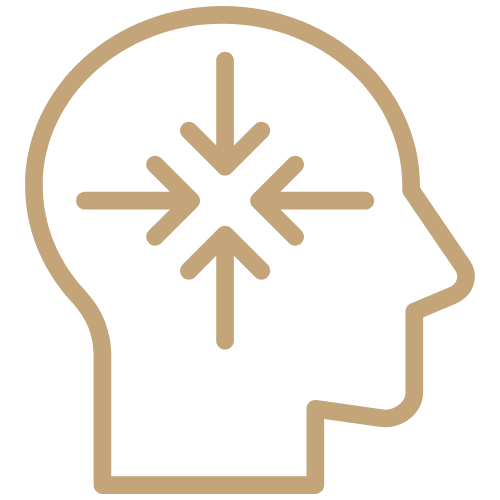In this detailed guide, we delve into the complexities of autism spectrum disorders, exploring the characteristics, challenges, and strengths associated with each individual. Caregivers will find valuable insights into behavioral patterns, communication styles, and sensory processing issues. By understanding these aspects, parents and caregivers can create more effective strategies tailored to the unique needs of their children.
Understanding Autism and Developmental Challenges in Children: Seeing the World Through Their Eyes
Every child learns, plays, and connects in their own unique way. For some children, that journey looks a little different — shaped by autism or other developmental challenges. Understanding these differences isn’t just about awareness; it’s about acceptance, empowerment, and building a world that works for every child.
What Is Autism?
Autism Spectrum Disorder (ASD) is a neurodevelopmental condition that affects how a person communicates, interacts socially, and experiences the world. The term spectrum means that autism varies widely — no two children are exactly alike. Some may speak fluently and excel academically but struggle with social cues, while others may communicate nonverbally and need more day-to-day support.
According to the Centers for Disease Control and Prevention (CDC), approximately 1 in 36 children in the United States has been identified with autism. Early signs often appear before age three, though diagnosis can occur later. These may include limited eye contact, repetitive movements, difficulty with changes in routine, or delays in speech and social interaction.
Beyond Autism: Understanding Developmental Challenges
Developmental challenges include a broad range of conditions that affect how a child grows, learns, and behaves. These may involve:
- Speech and language delays
- Cognitive or learning disabilities
- Motor coordination difficulties
- Attention and sensory processing differences
Sometimes, autism overlaps with other developmental conditions such as ADHD, intellectual disabilities, or anxiety disorders. Recognizing and supporting each area of need ensures children receive the right blend of services — from therapy to educational accommodations and family support.
Why Early Understanding Matters
Research consistently shows that early identification and intervention make a profound difference in long-term outcomes. Programs based on evidence-based models, such as Applied Behavior Analysis (ABA), speech and occupational therapy, and parent-mediated interventions, can help children build essential communication, social, and life skills.
But intervention doesn’t only mean therapy sessions — it also means helping parents and caregivers understand their child’s world. When families are supported, children thrive. Studies from the National Institutes of Health (NIH) highlight that family engagement improves developmental progress and reduces parental stress.
Seeing Strengths, Not Just Symptoms
Autism and developmental differences are not simply a list of challenges; they represent diverse ways of thinking, feeling, and experiencing the world. Many children with autism display remarkable attention to detail, strong memory skills, creativity, or deep focus on subjects they love.
By shifting from a “deficit” mindset to a strength-based perspective, we open doors for inclusion — in classrooms, playgrounds, and communities.
Creating Supportive Environments
Children with developmental differences often flourish in environments that:
- Provide predictability and structure
- Use visual supports and clear communication
- Encourage sensory-friendly spaces
- Offer positive reinforcement rather than punishment
- Involve collaboration between parents, teachers, and therapists
Community awareness is key. When neighbors, educators, and peers understand autism, they can respond with empathy instead of misunderstanding. Something as simple as offering patience in a grocery line, or a teacher giving a sensory break, can make a world of difference.
The Role of Families and Communities
Parents of children with autism often become advocates, researchers, and experts in their child’s needs — but they can’t do it alone. Nonprofit organizations, like TOBIJASON OUTREACH, helps bridge the gap by offering education, care navigation, and emotional support to families who might otherwise feel lost.
Strong community partnerships — between healthcare providers, schools, and advocacy groups — create a safety net that ensures no child falls through the cracks.
Moving Toward Understanding and Acceptance
Understanding autism and developmental challenges means more than learning clinical terms. It’s about seeing each child as capable, valuing differences, and investing in inclusion. The goal is not to “fix” a child but to create systems that adapt to them — systems that honor their potential, celebrate progress, and build belonging.
Every child deserves to grow in an environment that says, “You matter, exactly as you are.” When we lead with knowledge and compassion, that vision becomes possible — one family, one classroom, and one community at a time.
References (Evidence Base)
enters for Disease Control and Prevention (CDC). Autism Spectrum Disorder (ASD) Data & Statistics, 2023.
National Institutes of Health (NIH). Early Intervention and Outcomes for Children with ASD, 2022.
American Academy of Pediatrics (AAP). Developmental Surveillance and Screening Recommendations, 2020.
National Research Council. Educating Children with Autism. National Academies Press, 2021.
World Health Organization (WHO). Autism Spectrum Disorders: Key Facts, 2023.
